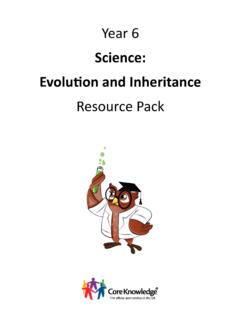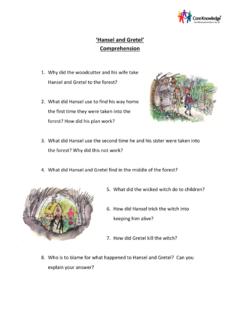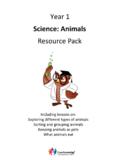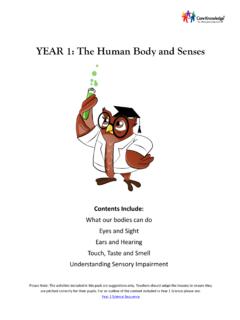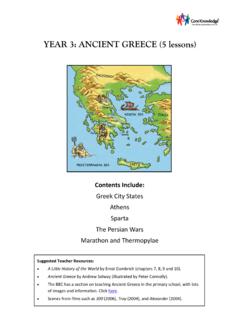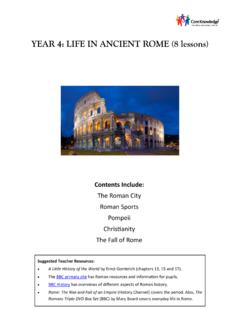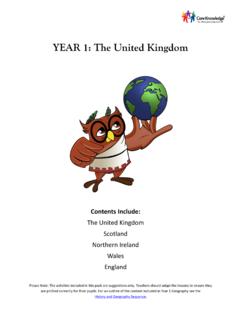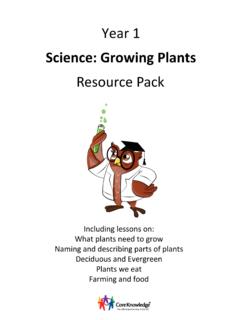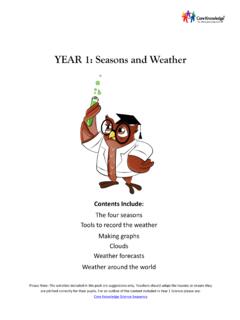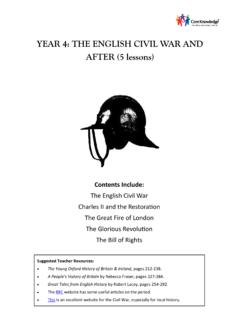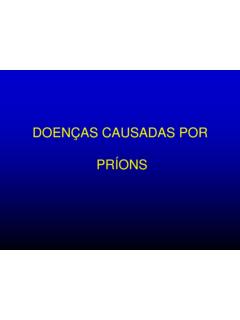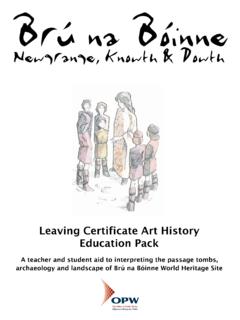Transcription of YEAR 1: PRE-HISTORIC BRITAIN (6 lessons) - Core Knowledge …
1 YEAR 1: PRE-HISTORIC BRITAIN (6 lessons) Contents Include: Pre-history Ice Age Stone Age Bronze Age Iron Age and the Celts Suggested Teacher Resources: The Young Oxford History of BRITAIN & Ireland, pages 11-42. The BBC has an excellent section on prehistoric BRITAIN . Many prehistoric Bri tsh artefacts are held by the Bri tsh Museum, and the websitehas some helpful classroom resources. The Museum of London has classroom resources on London before London .Please note: Every effort has been made to seek permission to use the images included in this pack. Please contact us if you have any questions. This pack is for educational purposes only. Lesson 1. Clues from the Past Prehistory is the term given to human existence before written records. The prehistoric period ended in different parts of the world at different times: in Mesopotamia the PRE-HISTORIC period ended in 3500 bc, whilst in North America it ended in 1492 ad.
2 In BRITAIN , the prehistoric period ended with the Roman Invasion in 54 bc. This lesson should give pupils an introductory overview of the 10,000 years from the end of the Ice Age to the arrival of the Romans, passing through the Stone, Bronze and Iron Ages. With no written records, we depend almost entirely on the work of archaeology to know about this period. See page 137-140 of What Your Year 1 Child Needs to Know. Learning ObjectiveCore KnowledgeActivities for LearningRelated VocabularyAssessment QuestionsTo understand that we know about the past from things that were left behind. Prehistory means a time before people wrote things who learn about things from a long time ago are called archeologists. Find out what children know about the past- ask them what they know about life a very long time ago.
3 Use this information to pitch the following lessons correctly. Explain that people in prehistoric times did not write things down. We only know about life a long time ago because people have found things that have been left behind. prehistoric archaeology Why don't we have books or letters from prehistoric times? How do we know about life a long,,long time ago? What are the scientists called who learn about things from a long time ago? We can find clues about the past from things people find in the ground. Ice AgeStone AgeBronze AgeIron AgeChildren can look at images of artefacts (or visit a museum to see artefacts first hand) and discuss what clues they might give us about people in the past. Give children pictures of prehistoric artefacts (resource 1) and discuss what they might have been used for.
4 Key Dates:10,000 BC- The end of the Ice Age- people started to reinhabit BRITAIN . 54 BC- The Roman Invasion- beginning of written records. 11. 2. 3. 1. Stones in a prehistoricstone circle at Avebury tion of Bronze Agesocketed axes from the Burnham Hoard (Portable Antiques Scheme) 3. Flint Axe, (WisbechMuseum) from the Past24. Stonehenge5. Bronze Age Sword foundin Cornwall (Portable Antiques Scheme) 6. Replicas of the RoseberryTopping hoard, in the Dorman Museum, Middlesbrough 4. from the Past3 Lesson 2. The Ice Age Between 100,000 bc and 10,000 bc, the world passed through its last Ice Age. During this period, northern Europe was covered in glaciers, and humans were unable to live there. As the ice began to melt, humans crossed from mainland Europe into BRITAIN .
5 The English Channel was not full of water because so much seawater was trapped in glaciers: instead, it was a low lying marshy area that stone age tribes could cross. As the glaciers melted further, the Channel filled and BRITAIN became an island around 5000 bc. For a brief period of time, humans and woolly mammoths may have lived together in Great BRITAIN . See page 137-138 of What Your Year 1 Child Needs to Know. Learning ObjectiveCore KnowledgeActivities for LearningRelated VocabularyAssessment QuestionsTo know that Woolly Mammoths lived in the Ice Age. During the Ice Age, almost all ofGreat BRITAIN was covered by thick sheets of ice called glaciers. No people lived in Great BRITAIN . An animal called a Woolly Mammoth lived in BRITAIN , it is now extinct. When the ice began to melt, people crossed the English Channel by foot as the channel was shallow.
6 Show images, here , here or here, of what BRITAIN would have looked like during the Ice Age. This is a quick journey through prehistoric BRITAIN from Horrible Histories, and there are some good clips from a BBC documentary here. Show children the map of Ice Age Europe. (resource 2) Study the woolly mammoth (resource 3).You could do a longer investigation into the discovery of Lubya, a frozen Mammoth calf in Siberia. See more information here, and a video here. Write a description of a Woolly Mammoth using vocabulary from the word bank (resource 4).woolly mammoth glacier What was BRITAIN like during the Ice Age? How did the Woolly Mammoth survive? What happened at the end of the Ice Age? How did BRITAIN become an island? Key Dates: Between 100,000 bc and 10,000 bc, the world passed through its last Ice Age.
7 In the Ice Shropshire MammothsThe Shropshire Mammoths roamed BRITAIN 12,700 years ago. During the Ice Age, much of Northern Europe was covered in grass. This suited the mammoths, as they were able to graze. When the earth s climate started to become warmer, trees and forests began to grow. This pushed out the Mammoths, who could not survive without large open grasslands. The dating of the Shropshire Mammoths suggests that humans and mammoths inhabited BRITAIN at the same time for a short period towards the end of the Ice Age. Some believe that the woolly mammoth became extinct due to human hunting, but there is no evidence these mammoths were hunted by humans. The remains suggest that mammoths died o ut due to the earth s changing climate ruining their ecosystem and leaving them without enough grass to survive.
8 Today, their fragile condition means the bones must be kept in climate controlled cases when on display at the Ludlow Museum Resource Centre. Outside BRITAIN , some amazing woolly mammoth remains have been found. In Siberia, a female mammoth calf which died aged 30 days was found frozen in the ice by a reindeer hunter called Yuri. Named Lubya, the calf is thought to be 42,000 years old. She was so perfectly frozen, that scien tists were able to look inside her stomach and find out what she ate for her last meal. Yuri chose to inform a museum of his find, but his cousin went behind his back and sold the calf to a local shop. There, a dog chewed o ff its right ear and part of its tail! However, Lub ya is now safe and living in a museum. In 1986, in a quarry in Shropshire, the remains of an adult and three baby mammoths were discovered.
9 They are amongst the most complete mammoth skeletons ever found in BRITAIN . Woolley Mammoths were around 11 feet tall, and weighed up to 6 tonnes 75 times the weight of a normal sized man! Lubya: a frozen woolly mam-moth calf. 6 Name: Date: LO: To know that Woolly Mammoths lived in the Ice Age What do we call the time when the Woolly Mammoth was alive? _____ Can you describe the Woolly Mammoth? _____ _____ _____ _____ _____ _____ _____ Bank Woolly Mammoth Ice Age cold prehistoric tusks frozen enormous trunk Word Bank Woolly Mammoth Ice Age cold prehistoric tusks frozen enormous trunk 8 Lesson 3. The Stone Age After the Ice Age, BRITAIN was inhabited by Stone Age tribes. This was a period of human civilisation before metalwork was discovered to create tools.
10 Instead, humans used tools made out of stone, wood, and animal bone. Before the technology of farming was developed, all food was found through either hunting wild animals or gathering wild plants, so people were known as hunter-gatherers . There were some great achievements of Stone Age people during this period, in particular the building of Stonehenge, and the creation of some impressive artwork, in particular the French caves paintings of Lascaux. See page 138-139 of What Your Year 1 Child Needs to Know. Learning ObjectiveCore KnowledgeActivities for LearningRelated VocabularyAssessment QuestionsTo explore life in Stone Age BRITAIN . Stone Age people made toolsout of stone, wood or bone. They had to survive on hun ting wild animals, or gathering wild food and would move around to find people began to farm, they started to settle in one place.
